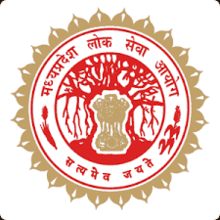Last Updated on मई 12, 2024 by Sonal
Syllabus For Computer Based Recruitment Test (CBRT) For The Post Of Scientific Assistant Cum Photographer In Forensic Science Laboratory In Goa Police Department
गोवा लोक सेवा आयोग वैज्ञानिक सहायक सह फोटोग्राफर पाठ्यक्रम – Goa PSC Scientific Assistant Cum Photographer Syllabus
| I. General English including Grammar | 05 marks |
| II.General Knowledge, Current Affairs and Events of National and International Importance | 10 marks |
| III. Logical Reasoning and Analytical Ability | 25 marks |
| IV. Core: | 30 marks |
Introduction, Definition, Principles, Scope and branches of Forensic Science. Development of Forensic Science in India.
Crime Scene investigation: Definition of Crime Scene. Classification of Crime Scene, Indoor & Outdoor, Primary & Secondary , Macroscopic & Microscopic Crime scenes, Significance and Ethics of Crime Scenes.
Physical Evidence: Definition, Classification, Source, Significance and value of Physical evidence. Linkage between Crime Scene victim and Criminal. Study of Crime Scene relating to gas explosion, Fire and Arson, homicide, suicide, murder, mass disaster. Tools and techniques in Crime Scene search. Collection, Preservation, Packaging of the material at Crime Scene. Re-Construction of Crime Scene. Chain Custody and safety measures at the Scene of Crime and in Laboratory.
Basic Principles of Statistics: Probability, Mean, Median, Mode, Chi-square, F-Test, measurement of uncertainty, Systematic and random sampling, Expert testimony in court of Law: Admissibility of evidence, Laws and Acts relevant to Forensic Science.
Photographic Optic and Equipment’s: History of B/W Photography: Early experiments and later developments. Photographic, Chromatic and spherical aberration, curvature of field, distortion and astigmatism, methods of reducing the above defects. Aperture of diaphragm, its function, notation different kinds of aperture and their construction, dependence of depth of field and focus on distance and number.
Types of camera lenses: Single (meniscus), achromatic, symmetrical and unsymmetrical lenses, telephoto, zoom, macro, supplementary and fisheye lenses. Concept of Digital imaging, Concept of the megapixels, optical and digital zoom, image size, file size, concept of frame, perception and composition.
Photographic camera types: Pin-hole, box, folding, large and medium format cameras, single lens reflex(SLR) and twin lens reflex (TLR), miniature, sub-miniature and instant camera, choice of camera and sizes, rising, falling, cross movements and swing back devices, Principal parts of Photographic cameras: (a) Lens (b) Aperture (shutters, variaus types and their functions, fo-cal plane shutter and in-between the lens shutter, shutter synchronization, self-timer.
View-finders and focusing systems: Direct vision and ground glass view finders, frame view finder, plane mirror and penta-prism view- finder, Fresnel prism focusing, split image focusing, range finders and range finder focusing, mechanism focusing distance scale.
Film chamber: Exposure counter, self-timer, tripod stand, panning tilt head, lends hood, cable release.
Photographic Light Sources: (a) Natural source, the Sun, nature and intensity of the sunlight at different times of the day, different weather conditions. (b) Artificial light sources: nature, intensity of different types of light sources used in photography namely.
Printing: Contact printing, projection printing using an enlarger, enlargement on Bromide paper, selection of papers, technique of enlargement- Burning, dodging, vignetting, flashing, diffusion or soft Focus, distortion creation and correction, making cartoon and multiple photograph on the same paper, making giant enlargements, glazing and drying.
Trick Photography: Methods, effect box, photomontage, wire screen-star effect, use of diffraction grating, texture effect, photolith, Bas-relief, solarization and photo grams.
Photomicrography: Photography using a microscope, essential equipment’s and methods, use of polarized light. Colour Photography: Basic principle, idea of colour, primary and secondary colours, colour and colour temperature.
Note:
- Duration for C.B.R.T : 90 Minutes
- Maximum Marks for C.B.R.T : 75 Marks




